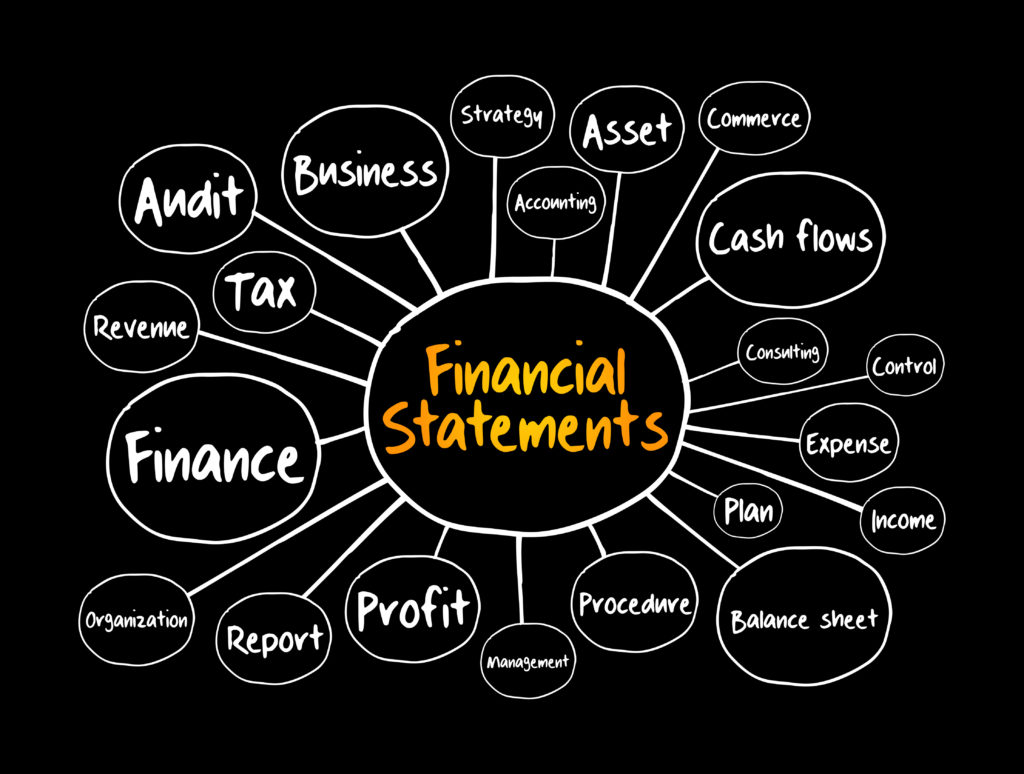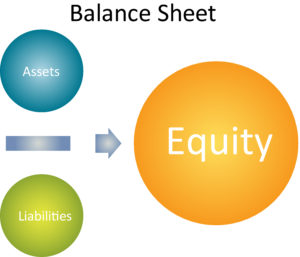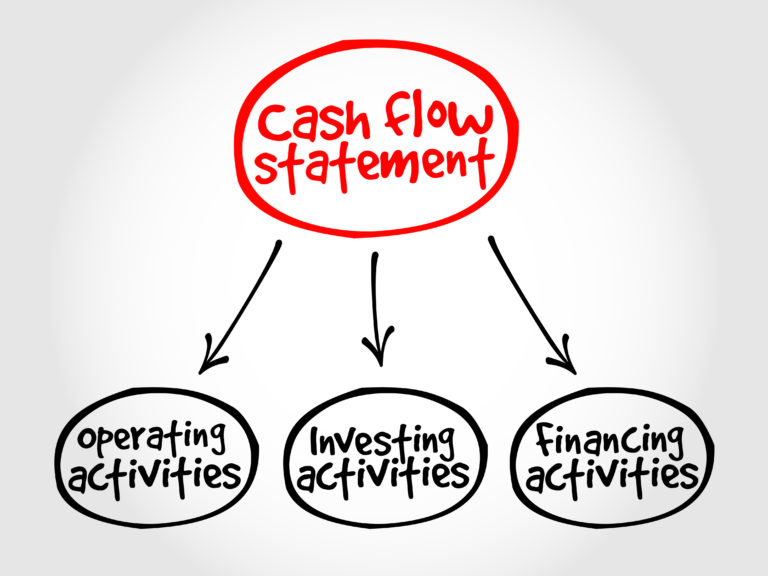How Breaking the Code of Financial Statements Led to Success for Companies

The financial statement is the compilation of business information. Its main objective is to give you a better view of your business’s financial health. Even more, there are three main financial statements: balance sheet, cash flow statement, and income statement.
Each one of these statements gives specific information of several areas of your business that, when seen together, gives you a whole scenario of the business’s financial status. Thus, the statements can be made monthly, quarterly, or whenever is convenient for the stakeholders.
How does each statement work?
Each financial sheet tells you something specific about a different part of the business. So, studying these statements gives you important tools you can use to make smart choices. By looking at the details in each account, you can figure out how your company’s finances are doing and what needs to be done. Let’s look at the most important parts of each statement:
(This is also called a “Profit and Loss Statement.”)
The income sheet shows how much money was made and how much was spent during a certain time period. It lets you know if your business is making money or losing money. This statement helps figure out where costs might need to be cut or changed.
-
Income Statement (Profit and Loss Statement): The income statement displays the revenue generated and expenses incurred during a specific period. It reveals whether your business is operating profitably or facing losses. This statement helps identify areas where cost reductions or adjustments may be required.
-
Balance Sheet: The balance sheet presents a snapshot of your company’s financial position at a given point in time. It showcases the assets, liabilities, and equity. This statement enables you to gauge your business’s overall worth and solvency.
-
Cash Flow Statement: The cash flow statement tracks the inflows and outflows of cash within your business. It highlights the sources and uses of cash, providing insights into your company’s liquidity and ability to meet financial obligations.
-
Statement of Changes in Equity: This statement outlines the changes in equity over a specific period, including contributions, distributions, and retained earnings. It helps you understand the factors influencing the company’s net worth.
By knowing what each account is for and what information it contains, you can get a full picture of your business’s financial health. This information gives you the power to make smart choices and take the right steps to make sure your business is successful and profitable.
Income Statement
The Income Statement works with profits and losses. The information relevant to this statement is all the details that demonstrate the business’s profitability. You do it by first defining the period, monthly, quarterly, or yearly. Then place all the expenses and revenues. The downside of this statement is that it only shows information relevant to the particular time chosen. The Income Statement shows you a positive net profit, which is excellent for a business, means high profits. I can also shows a negative net profit, which is a red flag because it shows a high number of debts. The formula to define this statement is this:
Net Profit = (Revenue – COGS) – Expenses
Note: Cost of Goods Sold (COGS): Costs associated with producing and selling goods, encompassing materials, and labor.
How to use the Income Statement?
You can use the Income Statement in many ways. Most importantly, it helps you make a better financial decision for your company. But not only that, it also helps with the following:
- Budget: it displays the reality of budget management. It shows if there is excellent budget management by having an under budget or inadequate control if there is an over budget. If you have over budget, it means you are using more cash than assigned to pay the business responsibilities or liabilities. It means you need to lower those liabilities (expenses) if you want to last.
It would be best to always have some cash left after paying debts, wages, yourself, and others.
- Product: through the Income Statement, you can define which product is more profitable for the business.
- Financial: those who invest and believe in you also want to see their money grow. The Income Statement is a way to show them how the business is doing.
What to Include in the Income Statement?
Here are some examples of what needs to be in your business’ Income Statement.
- Revenue
- Operating revenue: Operating revenue includes all of the business’s money from providing a service or selling goods.
- Nonoperating revenue is earned through non-core business activities, such as renting a property the business owns or royalties from a partnership.
- Cost of goods sold (COGS) Known as COGS, these are the costs of selling your products. They include the materials to develop your goods and the labor to get them on the market.
- Gross profit Calculated by subtracting the cost of goods sold from revenue, gross profit is the company’s profit.
- Operating expenses Are not linked to the goods or services you’re providing. They can include rent, office supplies, and utilities, among other things.
- Expenditures: Expenditures are money spent on goods or services to run the business. They are recorded at the time of purchase. Expenditures differ from expenses, which are typically offset over a period. For example, if you spend $10,000 on a copy machine and pay for it on the spot, that would be listed as an expenditure. But if you pay off the printer over several years, it’s an expense.
- Net income before taxes Net income is the income left over after subtracting all expenses from your gross profits. It’s the most crucial line of the income statement. If your net income is positive, your business is doing OK. You may need to look deeper at operations if your net income is negative. It’s typical for companies just starting to have a loss.
- Income taxes
- Interest
- Net profit or net loss
Gross profit = net sales – the cost of goods sold
Operating income = gross profit – operating expenses
Net income = operating income + nonoperating income
Income statement: Financial statement example
Not all Income Statements are the same. Each business is different and uses this statement according to its needs.

Balance Sheet
The Balance Sheet states the business’s assets, liabilities, and shareholders’ equity. It shows the finances at a specific period. In addition, the Balance Sheet offers a view of the business’ liabilities and revenues. You can use the Balance Sheet to demonstrate the value of your business based on the shareholders’ equities. By using this formula, you can verify the value:
Equity = Assets – Liabilities
Why a Business Needs a Balance Sheet?
The Balance Sheet has many uses, the most important; it helps to make better financial decisions based on liabilities and revenues. But not only that, but it also helps with:
Help you control your debt levels: the balance sheet shows the amount of debt the business has.
It helps you keep control of the spending as such action can decline the life of a business.
Show you the amount of liquidity your business has: liquidity is the action of transforming certain assets into cash in case of an abrupt situation like bankruptcy. Through the balance sheet, you can see which assets give this stability to the business. It also helps to turn those assets into cash to grow the business, not just solve problems.
Help you understand the net value of the business: the higher the net worth, the more profitable your company is. The net value is what is remaining after all the deductions. It shows the investors how excellent and stable the company is.
Most balance sheets are arranged according to this equation:
Assets = Liabilities + Shareholders’ Equity
What should you include on the Balance Sheet?
As stated previously, the balance sheet has three parts: assets, liabilities, and shareholders’ equity.
- Assets
- Current assets are typically what a company can convert into cash within a year. Examples are cash and cash equivalents, prepaid expenses, inventory, profitable securities, and accounts receivable.
- Noncurrent assets are long-term investments that a company does not expect to convert into cash in the short term, such as land, equipment, patents, trademarks, and intellectual property.
- Liabilities
- Current liabilities are typically those due within one year; some examples are accounting payable and other accrued expenses.
- Noncurrent liabilities are typically those a company doesn’t expect to repay within one year. Instead, they are usually long-term obligations, such as leases, bonds payable, or loans.
- Equity
- Equity is just as assets must equal liabilities plus shareholders’ equity; this equation can depict shareholders’ equity:
Shareholders’ Equity = Assets – Liabilities

Cash Flow Statement
The Cash Flow Statement is to verify all the inflow and outflow of cash within a business for a particular period. It is always good to verify the amount of cash the business has. The higher the amount of cash, the healthier the business financially. It will be a good habit to update your cash flow statement daily or weekly if you are starting a business. This put you in the excellent practice of verifying how the company is doing compared to the sales.
To make your Cash Flow Statement, you need to start with a balance. If you have zero money, then that is your balance, zero, but don’t worry, soon it will have plenty of money. Then as you keep managing your business, update the inflow and outflow of cash, be very precise because this is the heart of your business. If there is no money, there is no business.
Use the following formula to help you set up your cash flow statement:
End Cash Balance = Operations + Investments + Financing
What is in the Cash Flow Statement?
The Cash Flow Statement has three parts:
- Operational
- Investments
- Financing
Why make a Cash Flow Statement?
First, it gives you a report on cash management to help you understand the cash coming in and out of your business.
This shows if there is a need for more financial securities.
Also, help you with the account receivables. Paying all your responsibilities is crucial for the excellent management of a business. If there is a cash problem, you will need to readjust the payment dates, amounts, or conditions to help you adjust to your circumstances.
There you have it; those are the three most important statements you need when managing a business. Not having these statements puts your business in a complicated situation because you will not know how the finance is doing. Eventually, your business will crash! Keep good records of each liability and asset. Make individual records to collect the information daily or when it is most convenient for your business. Make it a good practice to stay on top of bookkeeping.
The Answer to the Question
Breaking the code of financial statements has been instrumental in driving success for companies. By deciphering the information contained within financial statements, businesses gain valuable insights that enable them to make informed decisions and take strategic actions.
Financial statements comprehensively overview a company’s financial health, performance, and position. Let’s explore how unlocking the secrets of financial statements contributes to success:
-
Enhanced Decision-Making: By analyzing financial statements, companies can assess their profitability, identify areas of growth, and evaluate the effectiveness of their operations. This empowers decision-makers to allocate resources efficiently, identify potential risks, and seize opportunities.
-
Improved Financial Planning: Understanding financial statements allows businesses to create realistic budgets, set achievable goals, and develop robust financial plans. Accurate financial data helps forecast future revenue, manage expenses, and optimize cash flow, resulting in greater financial stability.
-
Investor Confidence: Financial statements are a window into a company’s financial performance, making them crucial for attracting investors and securing funding. Investor confidence is strengthened when companies can showcase their financial strength, profitability, and potential for growth through clear and well-prepared financial statements.
-
Performance Evaluation: Financial statements enable companies to evaluate and compare their performance with industry benchmarks. This helps identify areas for improvement, measure strategies’ effectiveness, and set growth targets.
-
Compliance and Accountability: Clear and accurate financial statements ensure compliance with accounting standards and regulatory requirements. By maintaining transparency and accountability through financial reporting, companies establish trust with stakeholders and build a solid reputation.
In summary, deciphering financial statements empowers companies to gain a comprehensive understanding of their financial standing, make informed decisions, attract investors, plan effectively, evaluate performance, and maintain compliance. Ultimately, this knowledge and strategic use of financial statements contributes to businesses’ success and sustainable growth.




